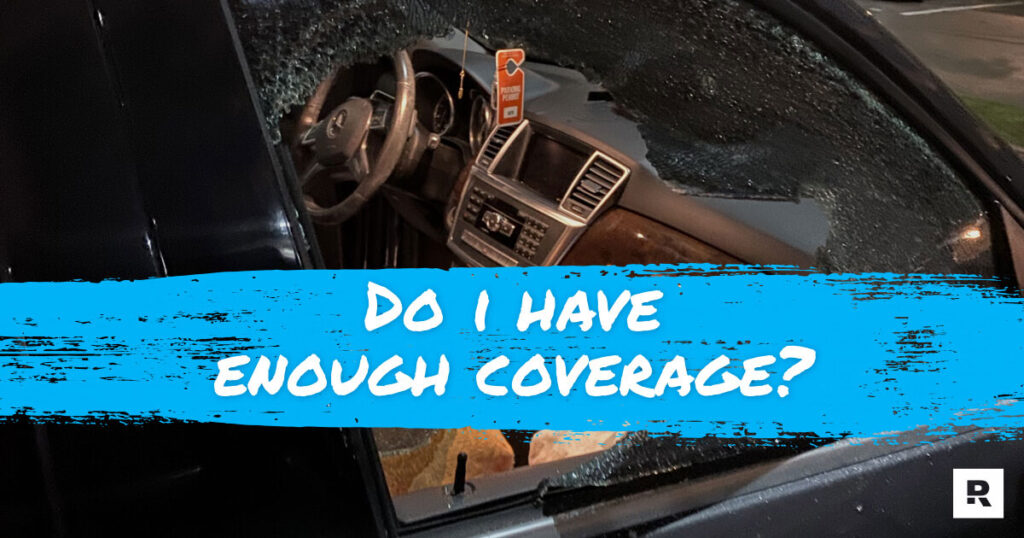10 tips to lower your car insurance premium as a high-risk driver

monkeybusinessimages/Getty Images
- High-risk drivers are a greater liability to insurers as they are more likely to file claims.
- They usually see higher premiums and can even be denied coverage.
- Reduce your premiums by shopping around and making an effort to lower your risk.
Most states require drivers to have auto insurance. However, those with bad driving records may find themselves struggling to cover the added costs that come with being deemed a high-risk driver.
High-risk drivers can expect to see more expensive premiums. Even those with clean driving records may see rate increases if they fit a profile that the insurance company determines makes them more likely to have an accident. Nevertheless, there are still ways to lower your cost and stay adequately covered.
What is high-risk auto insurance?
“Insurance companies define a high-risk driver as someone who is more likely to file a claim,” says Josh Damico, vice president of insurance operations at Jerry, a car-insurance comparison platform.
High-risk drivers often have poor driving histories, have had lapses in coverage, or live in hazardous areas. If you are a high-risk driver, expect to pay higher premiums for your policy or even denial of coverage.
Some providers are more friendly to high-risk drivers. These insurers may be lenient on common aspects that affect your premiums like your credit score. High-risk auto insurers will take on the additional risk to insure you, and some offer more affordable coverage than their competitors.
What determines who is classified as a high-risk driver?
Multiple factors play into your premium, from your claim history to your gender. However, below are the most common indicators of a high-risk driver:
- Poor credit: Many underwriters use your credit history to determine your likelihood of filing a claim. Those with poor credit tend to have higher premiums than those with good credit scores.
- Poor driving record: If you have a history of traffic violations, at-fault accidents, or DUIs, you may face significantly higher premiums, especially if you’ve filed any claims.
- Lapses in coverage: Having gaps in your coverage is an indicator of a high-risk driver. This is because insurers see you as willing to drive and take on more risks without protection. Driving without insurance is also illegal in most states.
- Location: If you live in an area with a high rate of accidents or crime, the likelihood of your car being damaged or stolen increases. Insurers take this into account when calculating your premiums.
- Type of car you drive: Poor crash safety test ratings, increased risk of rollovers, and how likely your make and model of car is to be stolen may affect your premium.
How much does high-risk auto insurance cost?
If you’re a safe driver in the market for an auto insurance policy, expect to pay an average of $1,070 per year, according to data from the Insurance Information Institute. However, if you’re a high-risk driver, you may pay rates 30% to 80% higher, according to Damico.
Fortunately, minor traffic infractions like speeding will fall off your record within three to five years, according to Progressive. When your record is clean again, you will see a decrease in premiums.
The amount you’ll pay for high-risk auto insurance will depend on what caused you to be put in that category. Driving under the influence of alcohol or drugs results in some of the biggest increases.
|
Driver’s profile |
Rate of increase |
|
DUI |
79% more after your first conviction |
|
Poor credit |
71% more in states where applicable |
|
Traffic violation |
43% more for two speeding tickets |
|
Accidents |
32% more for an at-fault accident that injures another driver |
Source: Insurance.com
Where to get affordable high-risk auto insurance
If you are a high-risk driver, do your due diligence and shop for coverage, as some insurance providers may not want to cover you. Remember, it is illegal to drive without your state’s mandatory minimum coverage. Some providers specialize in high-risk coverage so, you might be able to get better deals.
Here are some of the cheapest companies for drivers with a DUI, at-fault accident, and speeding tickets, according to the insurance-comparison shopping website Insurify:
Companies for drivers with DUIs
Drivers with a DUI see an average premium increase of 79% after their first infraction. Here are some of the cheapest auto insurance companies for drivers with a DUI.
|
Carrier |
Average monthly rate |
|
Amigo USA |
$107 |
|
Clearcover |
$161 |
|
Travelers |
$169 |
|
National General |
$174 |
|
Kemper |
$183 |
Companies for drivers with one at-fault accident
Drivers with one accident see an average premium increase of 32% after their first infraction. Here are some of the cheapest auto insurance companies for drivers with an at-fault accident on their record.
|
Carrier |
Average monthly rate |
|
Metromile |
$99 |
|
Farmers |
$130 |
|
Amigo USA |
$133 |
|
Kemper |
$144 |
|
National General |
$195 |
Companies for drivers with a speeding ticket
Minor traffic violations are usually wiped off your record in three to five years. However, you will typically pay higher premiums within that period. Here are some of the cheapest auto insurance companies for drivers with a speeding ticket.
|
Carrier |
Average monthly rate |
|
Metromile |
$124 |
|
Amigo USA |
$138 |
|
Farmers |
$141 |
|
Novo |
$146 |
|
TSC Direct |
$150 |
While these are some of the cheapest rates for insurance companies, it is essential to do your own research to determine if the company offers policies that are right for you
10 ways to lower your insurance cost as a high-risk driver
Finding affordable car insurance is often a challenge for high-risk drivers.
“More than 70% of Americans overpay for car insurance,” says Damico. While we don’t recommend lowering your coverage to reduce your car insurance bill, there are some actions you can take to reduce your premiums:
- Stack discounts: Discounts can have a big impact on your premiums. Insurance providers typically list the discounts that they offer on their websites. Contact your insurance agent to see if you qualify for lesser-known discount opportunities.
- Bundle insurance policies: Many companies offer discounts for bundling your policies, like your home insurance and auto insurance. You may also qualify for a discount for insuring multiple vehicles.
- Raise deductibles: Your deductible can have a big impact on how much you’ll pay for your insurance premiums. The higher the deductible, the lower your monthly rate.
- Be a safe driver: Many providers offer discounts for good driving behavior tracked through smart devices. Insurers also typically offer a discount for taking a defensive driving course, especially if you have poor driving history.
- Drive less: Putting fewer miles on your vehicle can decrease your premiums. Consider biking, taking public transportation, and using ride-sharing services.
- Have a good credit score: In states where credit-based insurance is applicable, having a good credit score (above 670) can reduce your insurance premiums.
- Install auto safety devices: Safety features like airbags and antilock brakes can save you on your policy. Let your insurer know if you have any, and inquire about discount opportunities.
This content was originally published here.




Responses